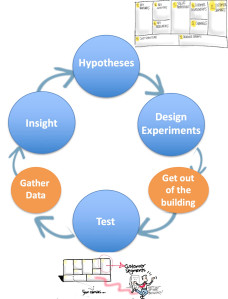With in-person classes canceled, we’re about to start our online versions of
Hacking for Defense
and Hacking for Oceans
(and here
). The classes are built on the Lean Startup
methodology: customer discovery, agile engineering and the business/mission model canvas. So how do our students get out of the building to do customer discovery when they can’t leave home? How do startups do it?
Reminder: What’s the point of talking to customers ?
Talking to customers seems like a simple idea, but most founders find it’s one of the hardest things they have to do. Entrepreneurs innately believe they understand a customer’s problem and just need to spend their time building a solution. We now have a half-century of data to say that’s wrong. To build products people want and will really use, founders first need to validate the problem/need, then understand whether their solution solves that problem (i.e. finding product-market fit).
Finally, to have a better chance of a viable enterprise, they need to test all the other hypotheses in their business/mission model (pricing, demand creation, revenue, costs, etc.).

The key principles of customer development are:
-
There are no facts inside the building, so get the heck outside.
-
All you have are a series of untested hypotheses.
-
You can test your hypotheses with a series of experiments with potential customers.

Now with sheltering-in-place the new normal, we’ll add a fourth principle:
 简体中文
简体中文

